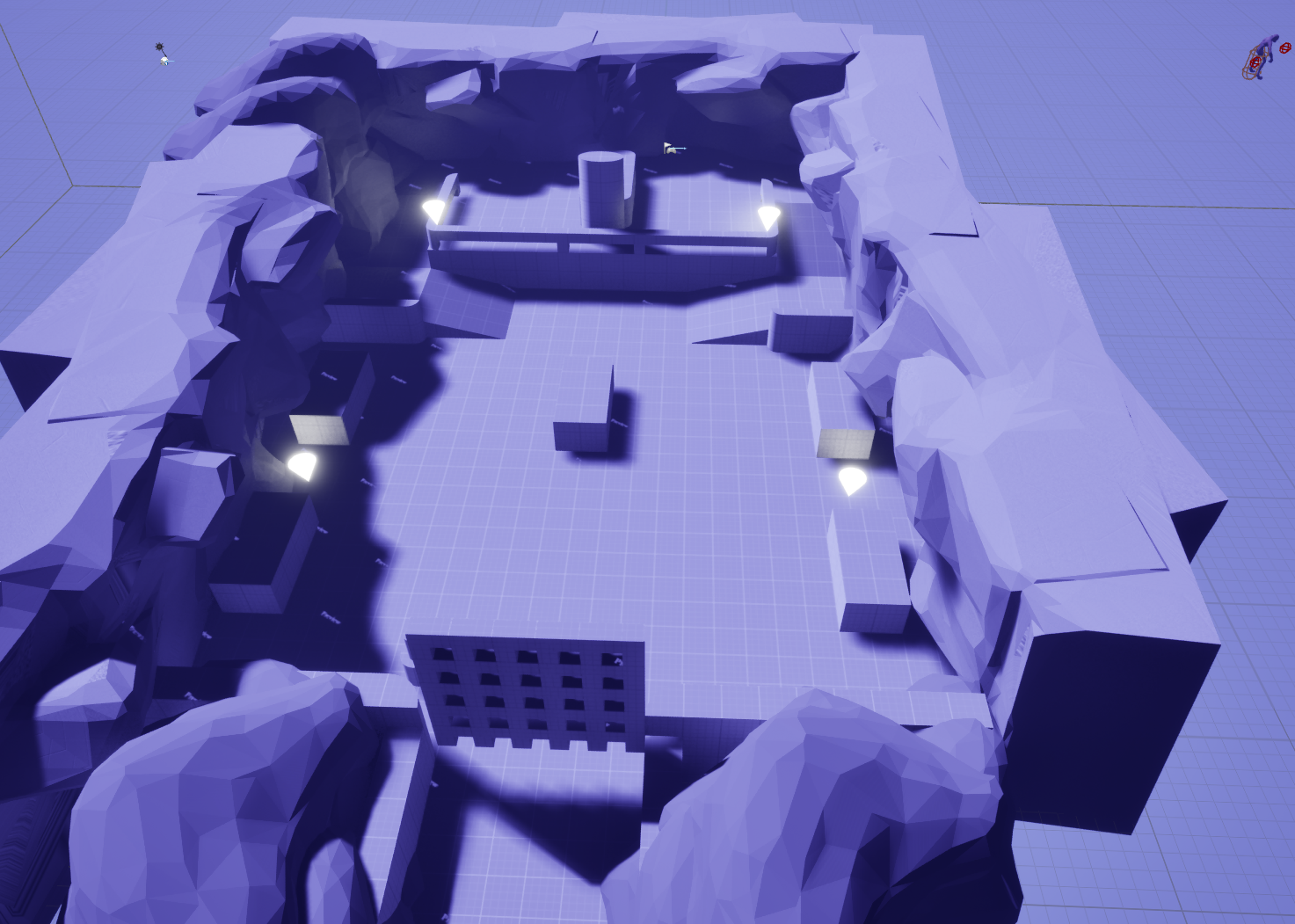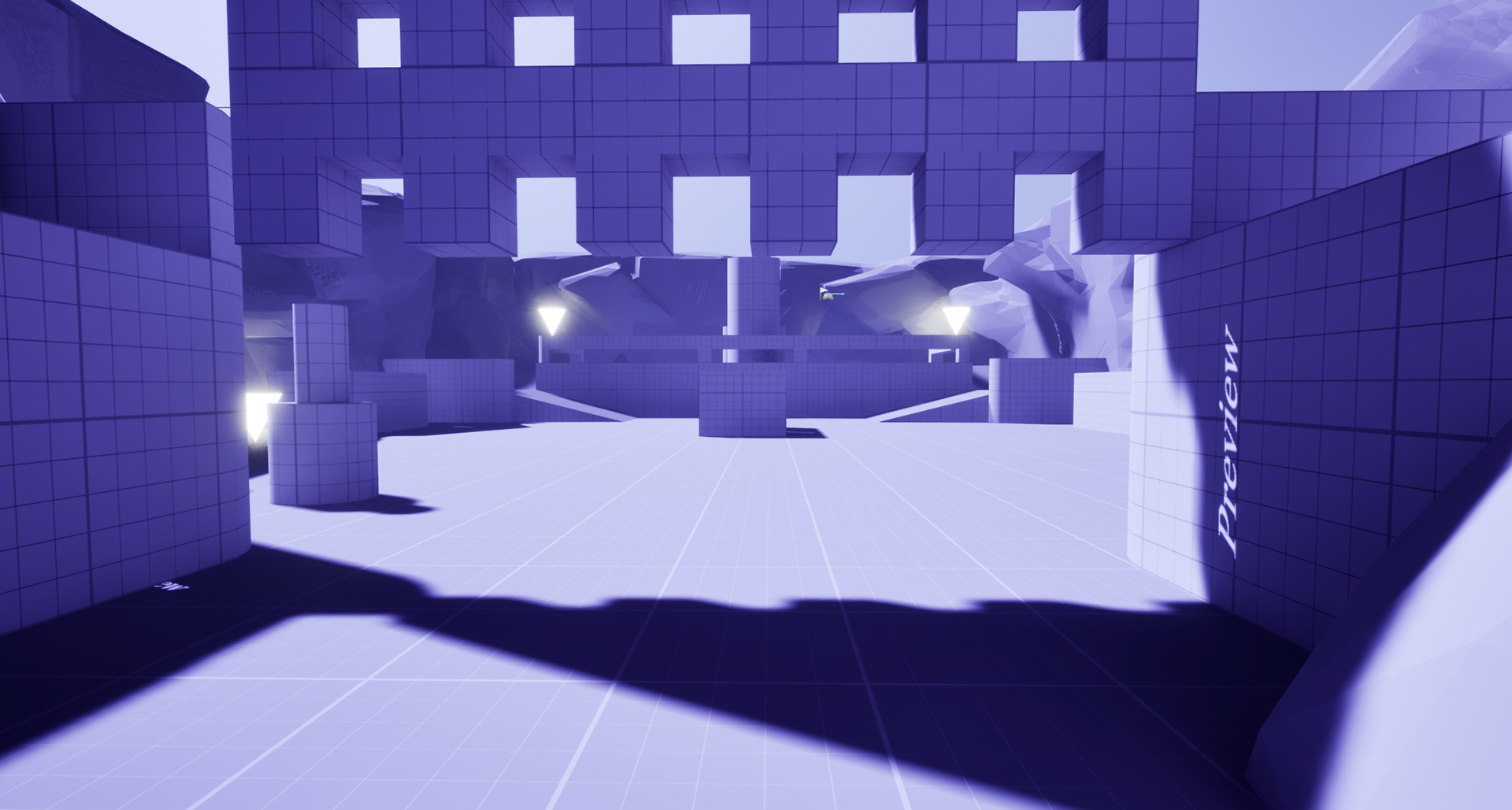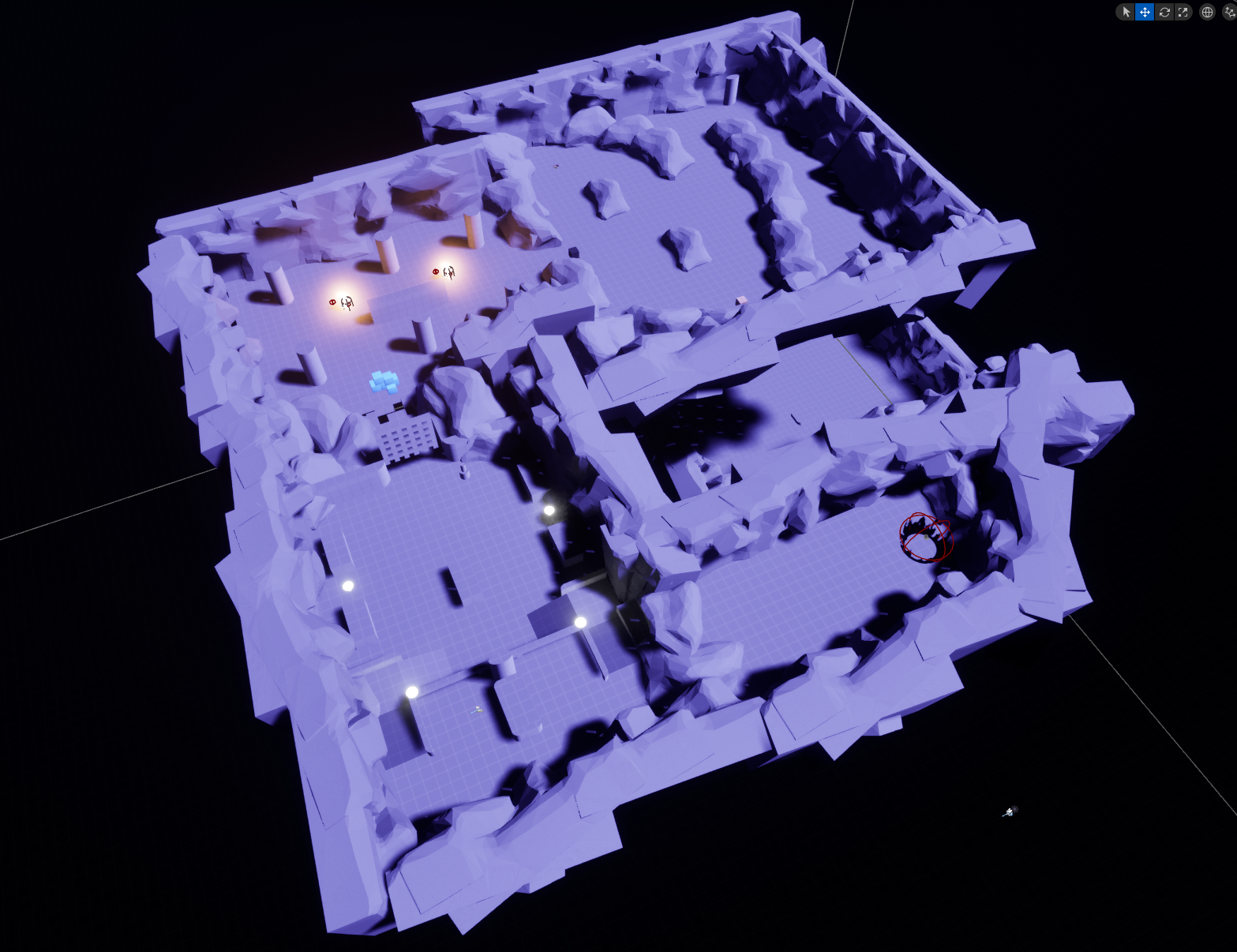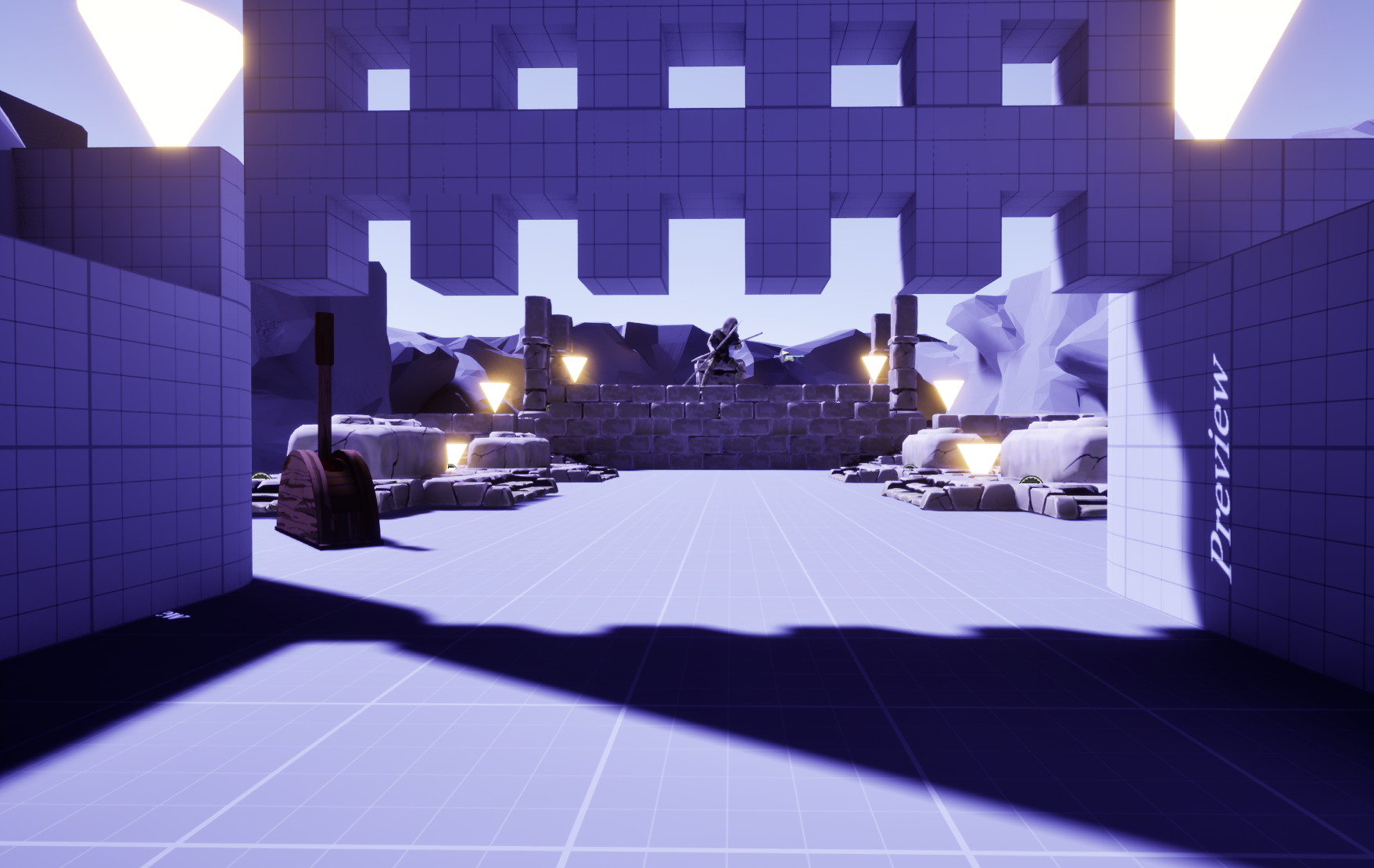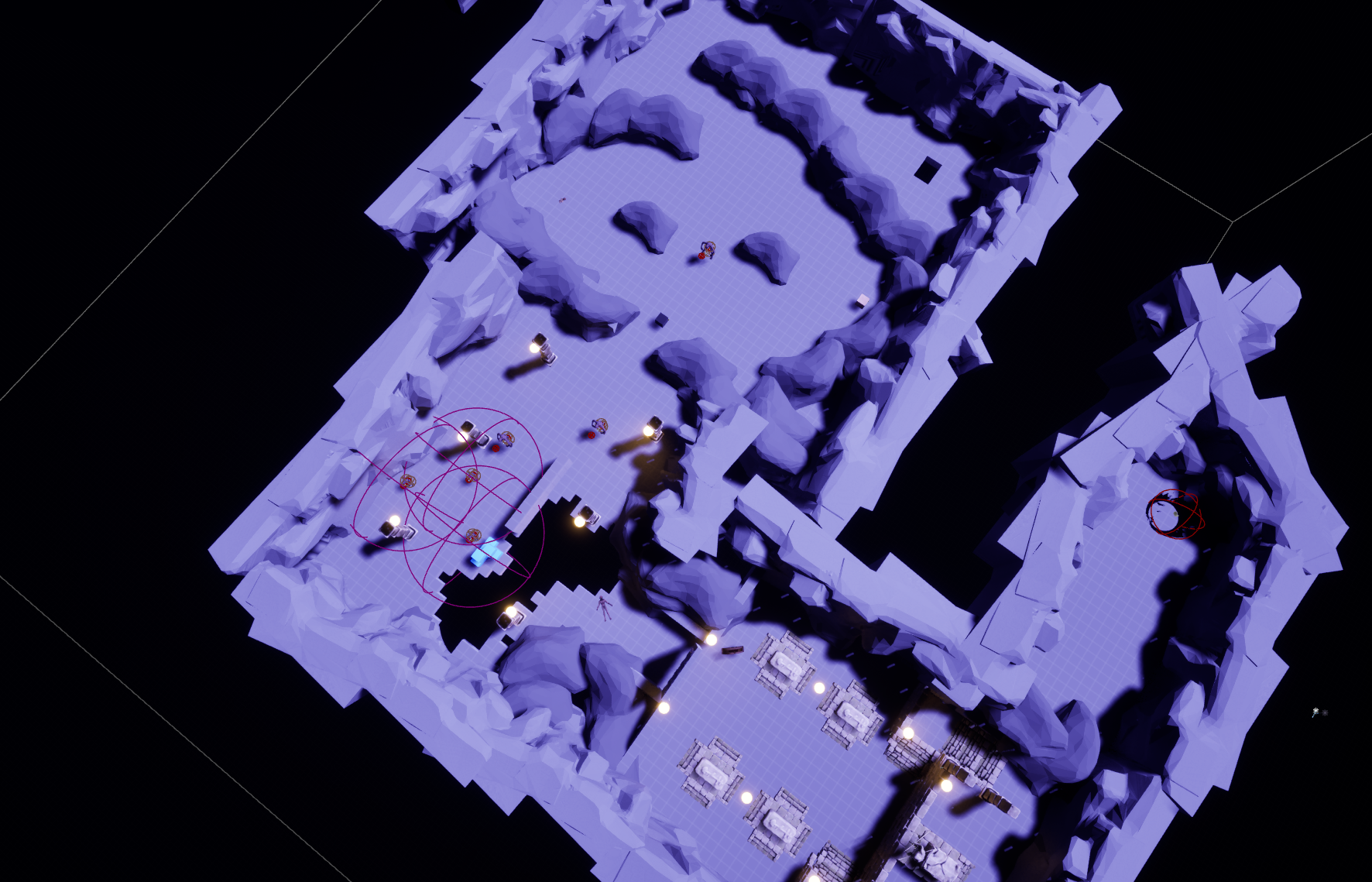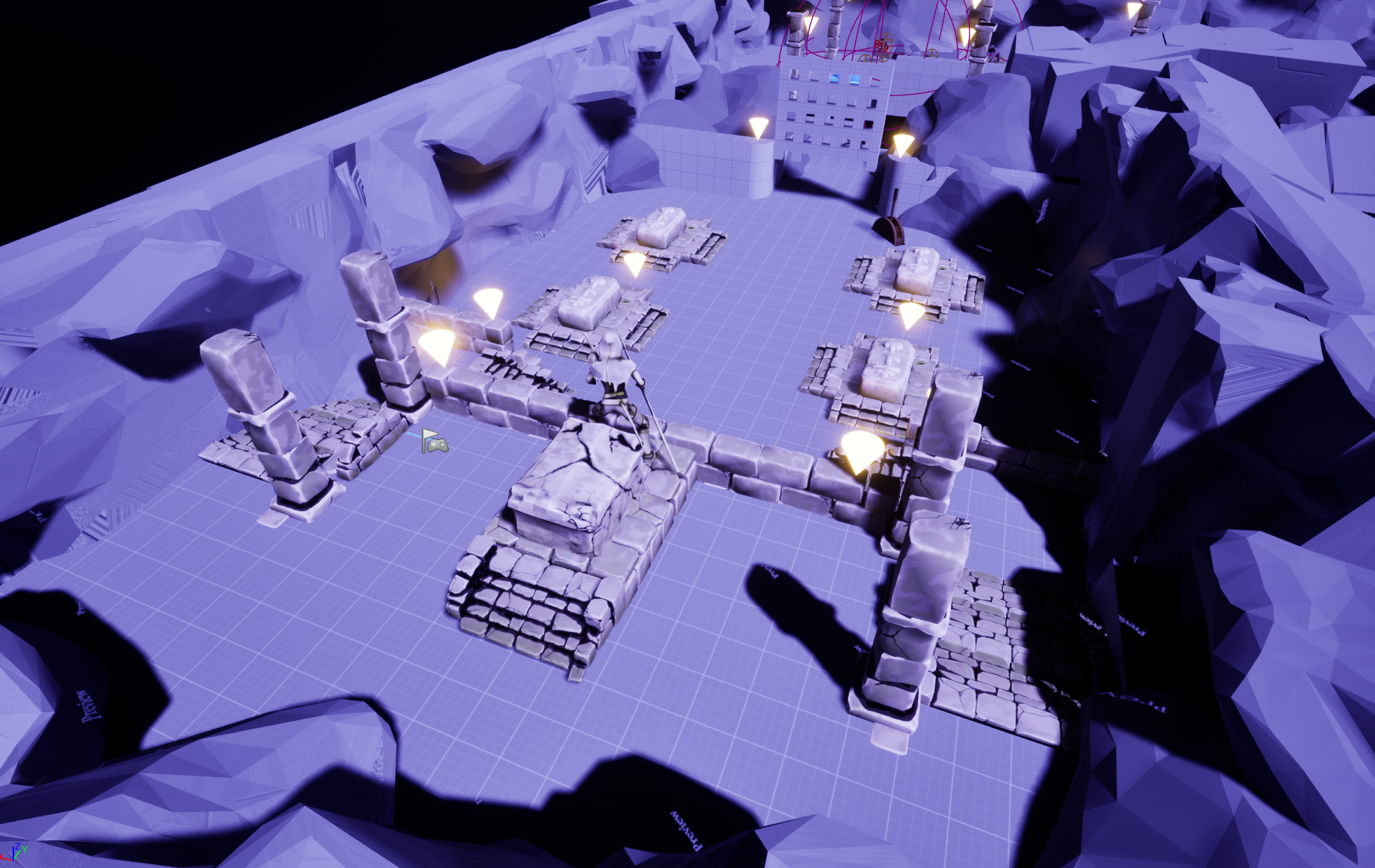For this Top-Down project, inspired by Slavic mythology and games like Ravenswatch and Diablo, I have designed two levels—the first one is a tutorial level set in a dark fantasy crypt, and the second is a main exploration-focused level. My main focus has been creating a space that not only teaches players the core mechanics but also immerses them in the world, ensuring the level is both educational and engaging. This is an ongoing project, and I am continually refining and improving the design to provide the best possible gameplay experience.
I have designed this level with a focus on gameplay needs, balancing progression and allowing the player to experience impactful interactions. By using a layered approach in Photoshop, I’ve been able to iterate on my design effectively, starting with a simple blockout and gradually adding more detail to the space. This process has helped me fine-tune both the gameplay flow and visual elements to create an engaging, immersive experience.
One of the key challenges was ensuring that the space would naturally guide the player without overwhelming them. I’ve used principles of composition to carefully direct the player’s attention, particularly in the first room, where the protagonist’s sarcophagus is elevated and surrounded by companions’ graves. This design choice subtly communicates the importance of the character’s backstory while also providing a clear visual hierarchy. The raised platform and statue in front of the sarcophagus serve to orient the player to both the space and the game’s narrative.
The layout of the crypt was another significant consideration. I intentionally designed it with a focus on controlled exploration, leading the player through rooms with distinct, purposeful interactions. As they move through the space, they learn basic mechanics such as lighting lanterns, activating mechanisms, and reading inscriptions. These environmental cues not only guide the player but also reinforce the game’s story and atmosphere.
An important design decision involved balancing the gameplay flow with player progression. The tutorial needed to offer a sense of accomplishment while still teaching players how to interact with the game’s systems. I’ve carefully crafted the challenges to be intuitive, with enough room for discovery, while maintaining a steady pace. For example, the tutorial introduces the dash mechanic with a simple chasm jump, which also ties into the environmental storytelling, gradually helping the player understand the movement mechanics.
Another challenge was creating a hub space that would function as a respawn point without making the player feel like they had to repeat the tutorial every time they failed. To solve this, I’ve integrated a "wending machine," a mechanic that gives players the same starting items they would have received during the tutorial. This feature becomes accessible only after the player completes the tutorial once, ensuring a smooth transition into the main level without frustrating repetition. It also maintains a sense of consistency in the player's experience while helping them bypass the tutorial in future attempts.
Tools & Technical Info
Unreal Engine | Photoshop | Assets: Custom assets made by our 3D artist in Blender

